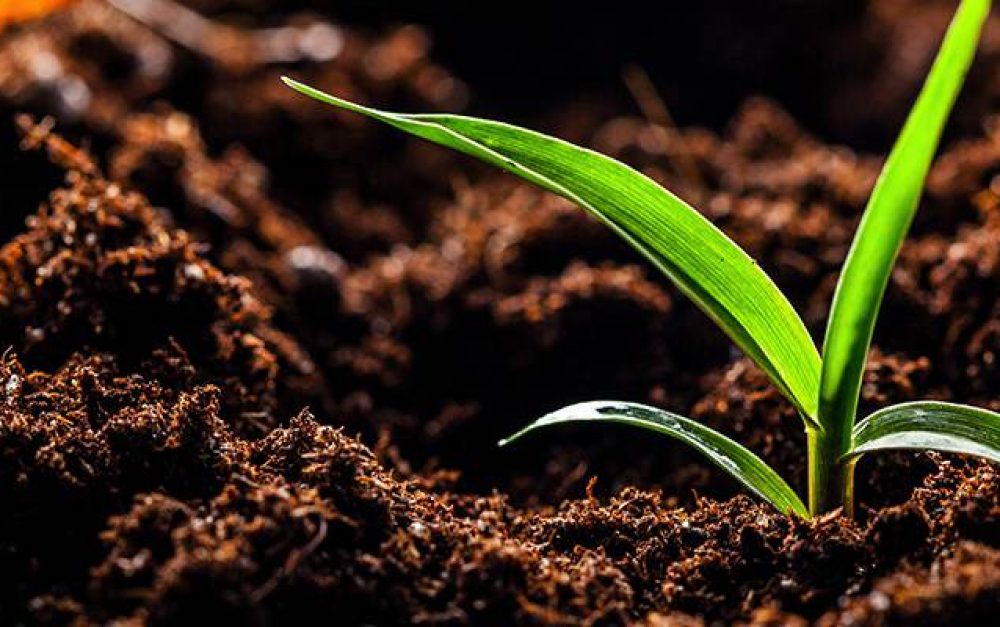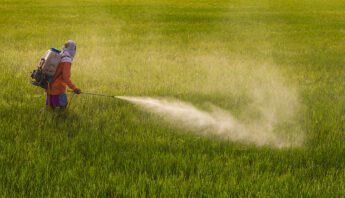Our current industrial agriculture system is contributing to the root causes of climate change. According to the Intergovernmental Panel on Climate Change (IPCC), agriculture accounts for almost one third of human-generated greenhouse gas emissions. What’s often overlooked is that regenerative agriculture or agroecology — the science and practice of applying ecological concepts, principles and indigenous knowledge to the design and management of farming — is key to mitigating carbon emissions and to reducing the amount of carbon already in our atmosphere.
Farmers, scientists and thought leaders are urging us towards a particular host of agricultural methods, termed “carbon farming,” as perhaps our best shot at slowing down the current climate changes.
Soil is our carbon storehouse
Carbon serves as the foundational element in our bodies and in the plants and animals we depend upon for sustenance. The carbon components of soil, referred to as “organic matter,” bond with nutrients and water to make them available for plants. These are essential to plant growth. The higher level of organic matter, the more fertile the soil.
“Carbon farming” encompasses land management and conservation practices that accelerate and enhance the capacity of soil to retain carbon. With the right methods, carbon can be sequestered long-term in soils — for decades, centuries or more.
Losing soil carbon, releasing CO2
Common agricultural practices such as plowing and tillage increase the rate of organic matter loss and release of carbon into the air in the form of carbon dioxide. In 2011, the U.S. Department of Agriculture (USDA) reported:
Tilling the soil is equivalent of an earthquake, hurricane, tornado and forest fire occurring simultaneously to the world of soil organisms. Simply stated, tillage is bad for the soil.”
Due to the heavy reliance on tillage in today’s industrial agriculture system, and land use shifts to accommodate monocultures, soil is rapidly losing organic matter and associated fertility. The world’s farm soils have lost an estimated 50-70% of their original carbon stock. And while the world’s population is projected to jump from 7 billion to 9 billion by 2050, median crop yields are likely to decline by about 2 percent per decade through 2100, according to the IPCC.
Regaining ground with carbon farming
In his book The Carbon Farming Solution, completed shortly after the 2015 climate talks, Eric Toensmeier presents solid, scientific evidence of the great potential for highly diverse agriculture to both mitigate and reverse the current trajectory of climate change.
The data show that, if implemented on a larger scale than currently practiced, regenerative agriculture — from tropical home gardens to temperate permaculture — could “draw down” more than 100 billion tons of carbon into the soil. That’s equal to 367 billion tons of carbon dioxide (CO2), which would indeed bring us back from our current climate change tipping point. Climate scientists report that to reverse the disastrous course we’re now on, we need to draw down an estimated 200 billion metric tons of CO2.
“If implemented on a larger scale, regenerative agriculture could draw down more than 100 billion tons of carbon into soil.”<>
Weathering climate change
Carbon farming not only offers the potential to sequester great quantities of carbon currently in the atmosphere. Bringing carbon into soil also improves the soil’s ability to capture water. This can help prevent runoff during floods and increase water retention during times of drought.
Additionally, the benefits of carbon farming overlap with those of regenerative farming, which protects water resources, pollinators and wildlife habitat, and improves soil quality and productivity.
Carbon farming in practice
While encompassing many of the practices of regenerative farming, or agroecology, carbon farming explicitly emphasizes methods that effectively sequester carbon.
Perennial grain and other crops — cereals, pulses (including beans), oil seeds, tubers — grow year after year without any human disturbance to the soil, allowing it to maintain its structure and hold carbon. In contrast, our typical grain production relies on use of annual crops — corn, soy and wheat — often under energy-intensive production systems that rely heavily on the use of tillage.
Agroforestry is the integration of trees and shrubs into annual crop production. Agroforestry systems offer the most robust version of carbon farming, sequestering by far the greatest amount of carbon at 10 to 40 times the best annual cropping or managed grazing systems.
“No-till” systems focus on alternatives to using plows, instead disturbing the soil as little as possible. Singing Frogs Farm in Sebastopol, CA is a shining example of a successful farming business using no tillage, instead relying on practices like using hand tools for soil aeration, cover cropping, mulching and compost application.
Livestock rotation avoids overgrazing, which destroys grasslands and the underlying soils. Without abundant, actively photosynthesizing plants, no new carbon can enter the soil. But rotational grazing methods, combined with compost application, has been shown to increase the net ecosystem carbon storage.
Biochar is charcoal, a natural byproduct of forest fires, used for agricultural purposes. Throughout history, studies illustrate charcoal enhances soil’s ability to retain nutrients, water, and increase carbon levels. As a stable form of carbon, charcoal (also known as biochar) can last in soils for up to 10,000 years.







